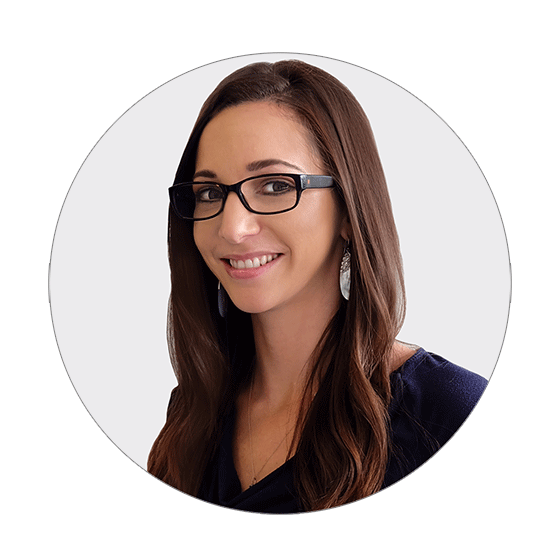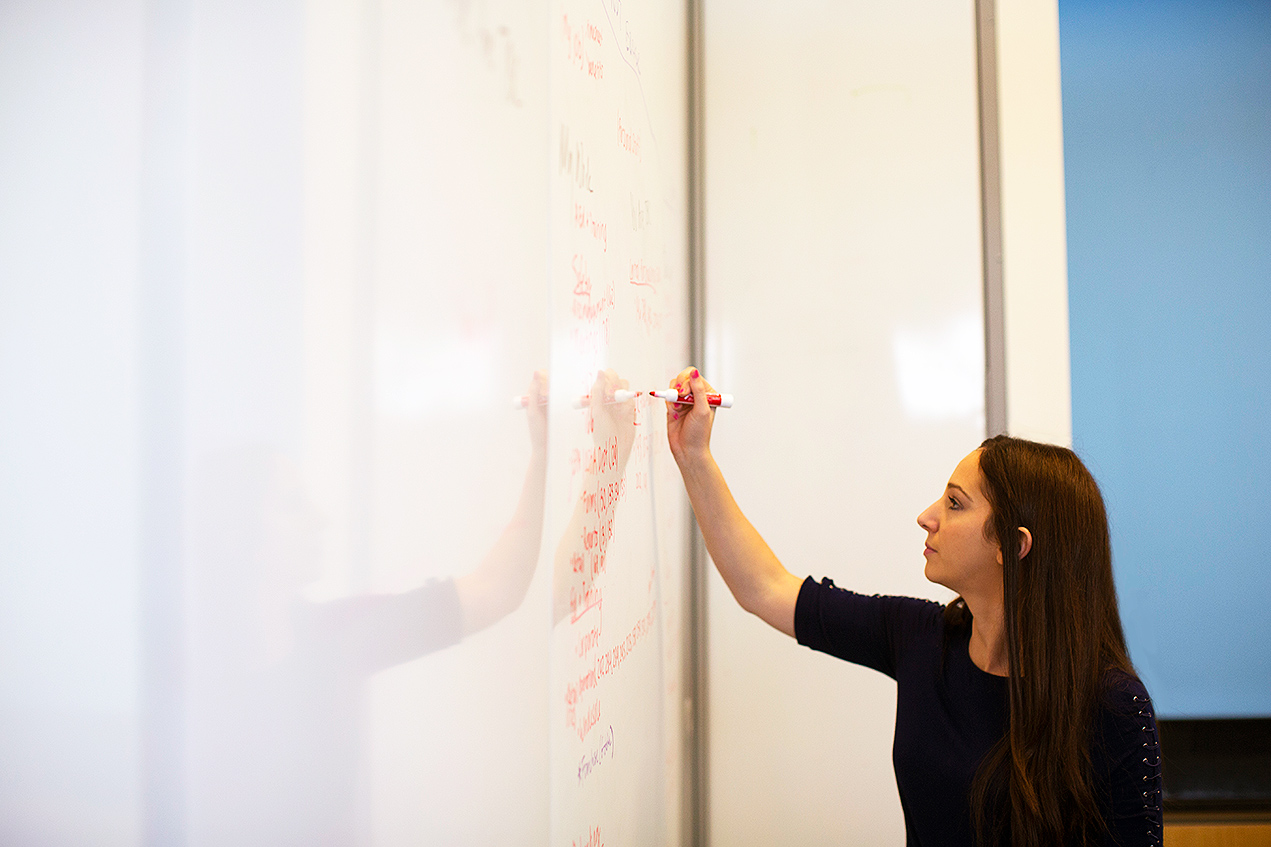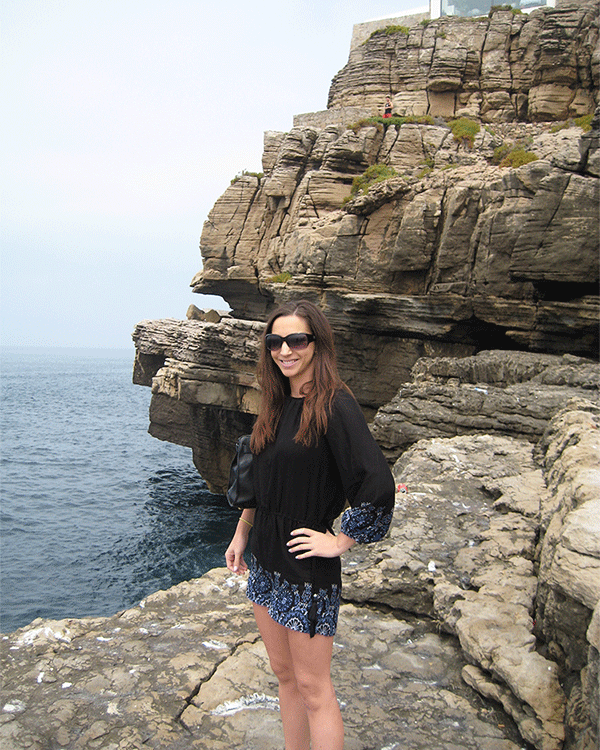Interview by Visual Collaborative
May 2019 7 min read

Brittany Albuquerque née Sarbone is a User Experience Architect based in Palm Beach Gardens. Evolving in the field of Cognitive Psychology, we discuss her career transitions, thoughts on perseverance as a woman in enterprise and her future aspirations in our Voyager interview series.
(VC) Tell us about your upbringing in the New Jersey area as well as the eastern seaboard. You now live in Palm Beach Florida, how did this all come out?
(Brittany) I grew up in a rural town in central New Jersey, where I was very sheltered and spent my childhood viewing the world through rose-colored glasses.
Being in the field of Cognitive Psychology, it was important for me to truly listen to and develop empathy for the various people I encountered.
I knew that once I graduated High School I wanted to see and live in as many places as I could. From College to Grad School to my first job, I ventured up and down the east coast. The most rewarding aspect of moving so much was my ability to experience different environments and meet people with diverse backgrounds and perspectives from my own. Being in the field of Cognitive Psychology, it was important for me to truly listen to and develop empathy for the various people I encountered.
I had always wanted to end up in Florida, so when I received a call offering me a job in Palm Beach Gardens, I knew it was time for another fresh start. I packed up my car with a few bags of clothes, drove down with my dog in tow and have been living here ever since.
(VC) You studied neuroscience in University and then went onto human factors at George Mason and now a lead architect at Levatas. Was this a natural career progression for you or it all happened according to a specific plan?
(Brittany) When I first started college, I had no idea where I would end up. That drove me crazy. I would spend countless hours researching careers, making lists of my interests and strengths and meeting with advisors. I initially set broad goals based on my general interests that over time narrowed into a structured career path. My love for science evolved into my passion for cognitive psychology, which led to a career in Human Factors and User Experience Design. When I first learned about the field of Human Factors Psychology, I was shocked by how perfectly it paralleled with my interests and professional goals. Human Factors and UX Design takes into account how our minds work in order to design products to be as intuitive and efficient as possible. I researched what I had to do to end up in this career and then I took every step possible to make it happen. The progression along my career path was a natural transition, but I had set specific goals for myself in order to make it happen.

Photo courtesy of Brittany Albuquerque
(VC) You spend loads of time in information architecture. Some designers outside of work hours are unable to switch off due to obsessive compulsive mental habits of sorting, do you find yourself arranging things and spaces around you in your mind outside work?
(Brittany) Always. The way our minds process information is to sort our environment into schemas, or categories. When I am constructing a software’s information architecture, I have to think about how users will expect the content to be organized. If a user does not know where to find something, they will use schemas to deduct where it should be. Therefore, I am constantly thinking about how to group things around me to make them more efficient. My house, for example, is arranged to be very simple and functional – just like my designs.
(VC) At this stage of your career considering your present commitments, If you could work alongside any personality or enterprise. Who would it be and why?
(Brittany) As cliche as it might be, I would love to work with Apple. I’m a huge fan of the simplicity and elegance of their UI and often use their design elements as inspiration in my work. It would be a professional highlight to participate in a brainstorming session around the features of their newest technologies. I would love to face the challenge that comes along with anticipating how people will use and react to a technology they have never seen or interacted with before. As someone who gets inspired knowing my designs will make people’s lives easier, it would be thrilling to work on a product that impacts such a large population.
Success doesn’t happen overnight; you have to put in the time in order to make it worth it. You have to take risks and you have to put yourself in uncomfortable situations in order to grow.
(VC) As a woman in America who maybe considered privileged based on your professional experiences, what can you candidly tell aspiring young women or entrepreneurs about success and risk in business?
(Brittany) You have to work hard. Hard work is the only language that translates across cultures and disciplines. Employers and colleagues will develop respect for you when they see the effort and passion you put into your work. No one will be able to argue your worth when you have concrete examples of the value and experience you bring to the table. I believe that you get out what you put in. Success doesn’t happen overnight; you have to put in the time in order to make it worth it. You have to take risks and you have to put yourself in uncomfortable situations in order to grow. But the pride you feel after you achieve your goals will make all the time and hard work worth it.
(VC) Observing the rising despondency of political movements in parts of the United States and some places of the southernmost states, as a female leader in design are you more critical about your own career as a woman or more optimistic given the trajectory of the present times?
(Brittany) I have definitely become more cognizant of the challenges that surround female leaders recently, but I believe the rising attention can only benefit women leaders moving forward. The first step to change is acknowledging the problem in order to determine how to fix it. The most important thing is to focus on the solution, rather than the problem. Instead of fixating our attention on being held back, we simply need to push forward. The path ahead may have more obstacles and challenges than the path of others, but those obstacles are how we grow, how we excel, and how we gain respect. And once again, all that hard work will only make the victory that much more sweet.
(VC) Some mention the Renaissance as an art period they admire. If you can time-warp back to any era, what time would it be and why?
(Brittany) Ironically I would time warp to the time period right before the internet. The world was much simpler then. Some may find this sentiment contradictory to my career choice, which centers around technology, but at its’ core User Experience is not about the technology but how our minds process that technology. It would be refreshing to once again observe the contrast in how our minds processed our world back then, compared to now.

Photo courtesy of Brittany Albuquerque
(VC) What kind of design or commercial work if any can the world expect from Brittany within the next 5 years?
(Brittany) Right now the industry is moving towards Artificial Intelligence, so I am currently working on projects focused on Machine Learning and Computer Vision. I see myself further pursuing this direction as technology exponentially advances and products get smarter. I would love to lean more towards product design than software design – which will most likely be a natural evolution as our interfaces change from traditional computer screens to other mediums.